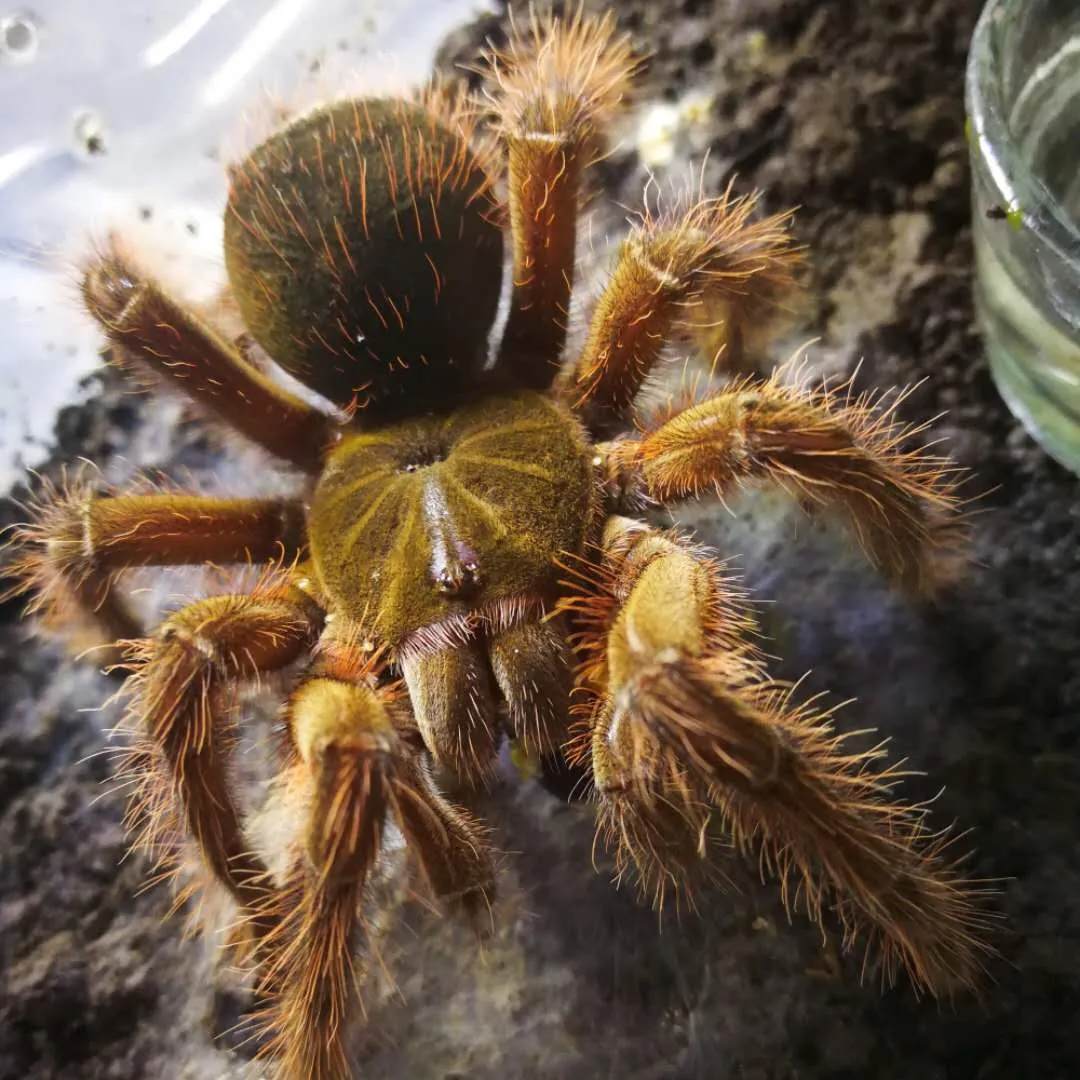What is a Blondi Tarantula (Theraphosa blondi)
The Blondi Tarantula, scientifically known as Theraphosa blondi, is a fascinating creature that captivates the attention of arachnid enthusiasts worldwide. This impressive spider holds the title of the world’s largest spider by mass and leg span, making it a truly remarkable species. Native to the rainforests of South America, the Blondi Tarantula is not only known for its size but also for its unique characteristics and behaviors. Understanding this giant spider requires exploring its physical attributes, natural habitat, and the essential aspects of its care. Whether you’re a seasoned tarantula keeper or simply curious about the animal kingdom, the Blondi Tarantula offers a wealth of intriguing facts and insights into the diversity of life on Earth. This article will delve into the specifics of these magnificent creatures, providing a comprehensive guide to their world.
Appearance and Size
The Blondi Tarantula’s sheer size is its most defining feature. These spiders can have a leg span of up to 12 inches (30 cm) or more, making them larger than many dinner plates. Their bodies are typically covered in dense, reddish-brown hairs that provide both camouflage and a sensory function. Their fangs, though formidable, are used primarily for subduing prey rather than posing a significant threat to humans unless provoked. The overall appearance is robust and powerful, reflecting their status as apex predators in their natural environment. A fully grown Blondi Tarantula can weigh over 6 ounces (170 grams), solidifying its position as the heaviest spider in the world. Observing the size and structure of this spider is a remarkable experience.
Habitat and Native Region
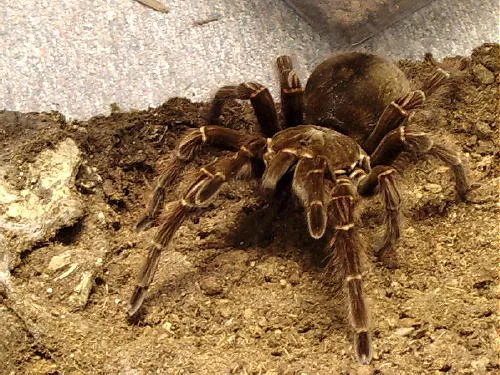
Blondi Tarantulas are native to the rainforests of northern South America, specifically found in countries like Brazil, Venezuela, Guyana, Suriname, and French Guiana. They prefer humid, tropical environments and are often found in burrows they dig themselves or take over from other animals. These spiders thrive in areas with high humidity and temperatures, typically around 75-85°F (24-29°C). Their habitat is characterized by dense vegetation, providing both cover and a source of prey. They are primarily terrestrial spiders, meaning they spend most of their time on the ground. The natural environment plays a crucial role in their survival, offering protection from predators and access to food sources like insects, small reptiles, and occasionally, small mammals. Understanding their natural habitat is essential for replicating their needs in a captive environment.
Diet and Feeding Habits
Blondi Tarantulas are voracious eaters, and their diet in the wild consists primarily of insects, such as crickets and beetles. However, their diet can also include small vertebrates like lizards, mice, and even small snakes. In captivity, a varied diet is essential to ensure their health and well-being. Common food items include crickets, mealworms, and roaches, supplemented with occasional pinky mice for larger specimens. The frequency of feeding depends on the spider’s age and size, with juveniles requiring more frequent meals than adults. It’s important to remove any uneaten food to prevent the growth of mold and maintain a clean enclosure. Providing fresh water at all times is also vital for their hydration. Observing their feeding habits reveals their predatory instincts and their active role in their ecosystem.
Top 7 Facts You Must Know
Fact 1: The World’s Largest Spider
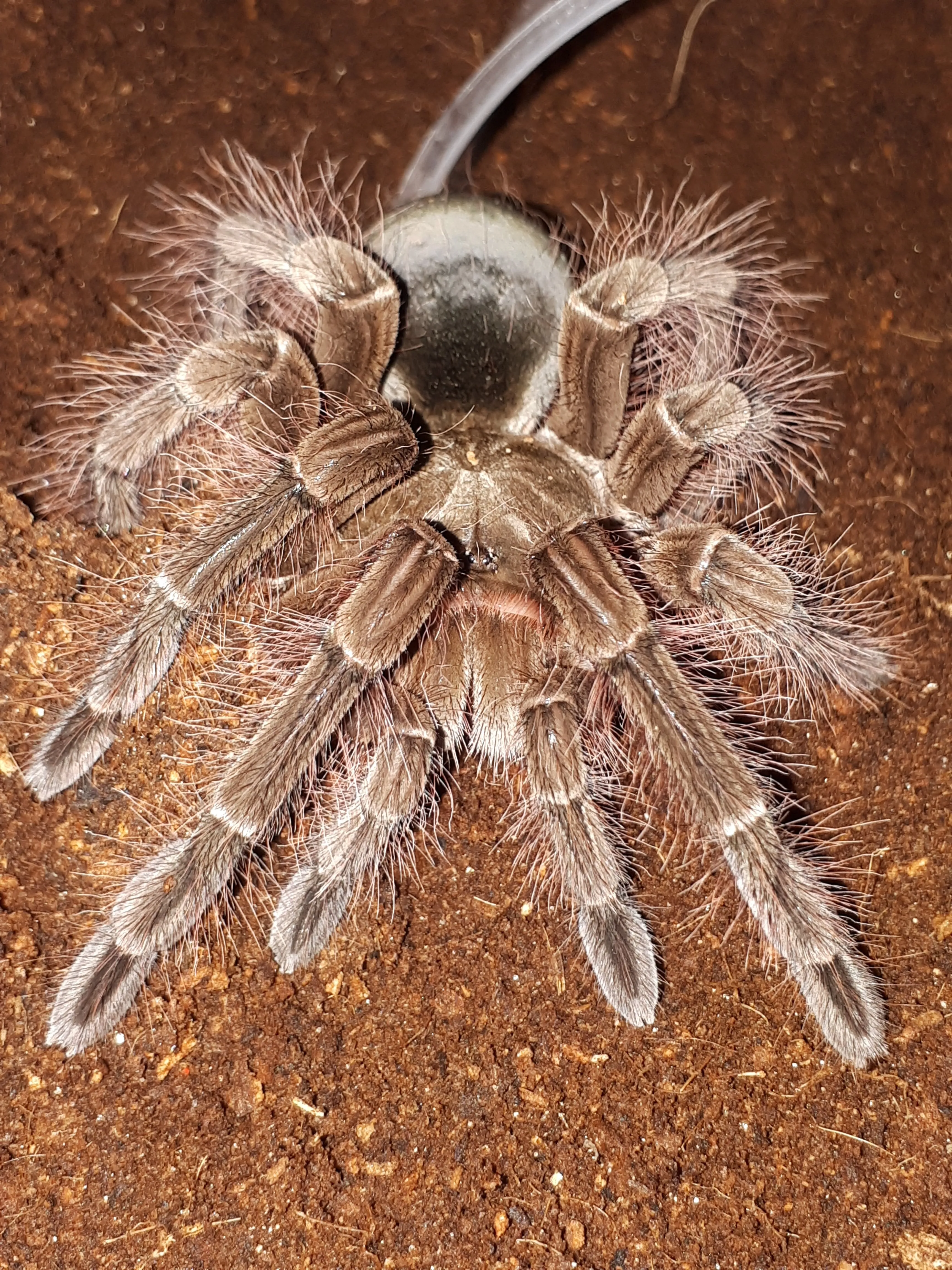
As mentioned earlier, the Blondi Tarantula holds the title of the world’s largest spider by mass and leg span. While other spiders may have longer leg spans, the Blondi Tarantula is the heaviest. This impressive size contributes to their imposing appearance and their ability to take down larger prey. The sheer size of these spiders makes them a marvel of the arachnid world, and they’re a favorite among spider enthusiasts. The size can vary between individuals, but they almost always are the largest species in the world.
Fact 2: Remarkable Leg Span
The leg span of a Blondi Tarantula can reach up to 12 inches or more. This expansive reach allows them to cover significant ground when hunting and provides a formidable presence. The legs are covered in dense hairs that aid in sensing vibrations and contribute to their ability to navigate their environment. When they are at their biggest, their size can intimidate any predator or prey. The size can intimidate people too, due to their appearance.
Fact 3: Defensive Hairs
Blondi Tarantulas have urticating hairs on their abdomen, which they use as a defense mechanism. When threatened, they can flick these hairs toward a potential predator, causing irritation and discomfort. These hairs can be particularly irritating to the eyes and skin, and they serve as a deterrent to discourage unwanted attention. The hairs are not venomous, but they are a nuisance, as they are irritating. While they are not life-threatening, they serve as a safe defense mechanism for the spider.
Fact 4: Lifespan
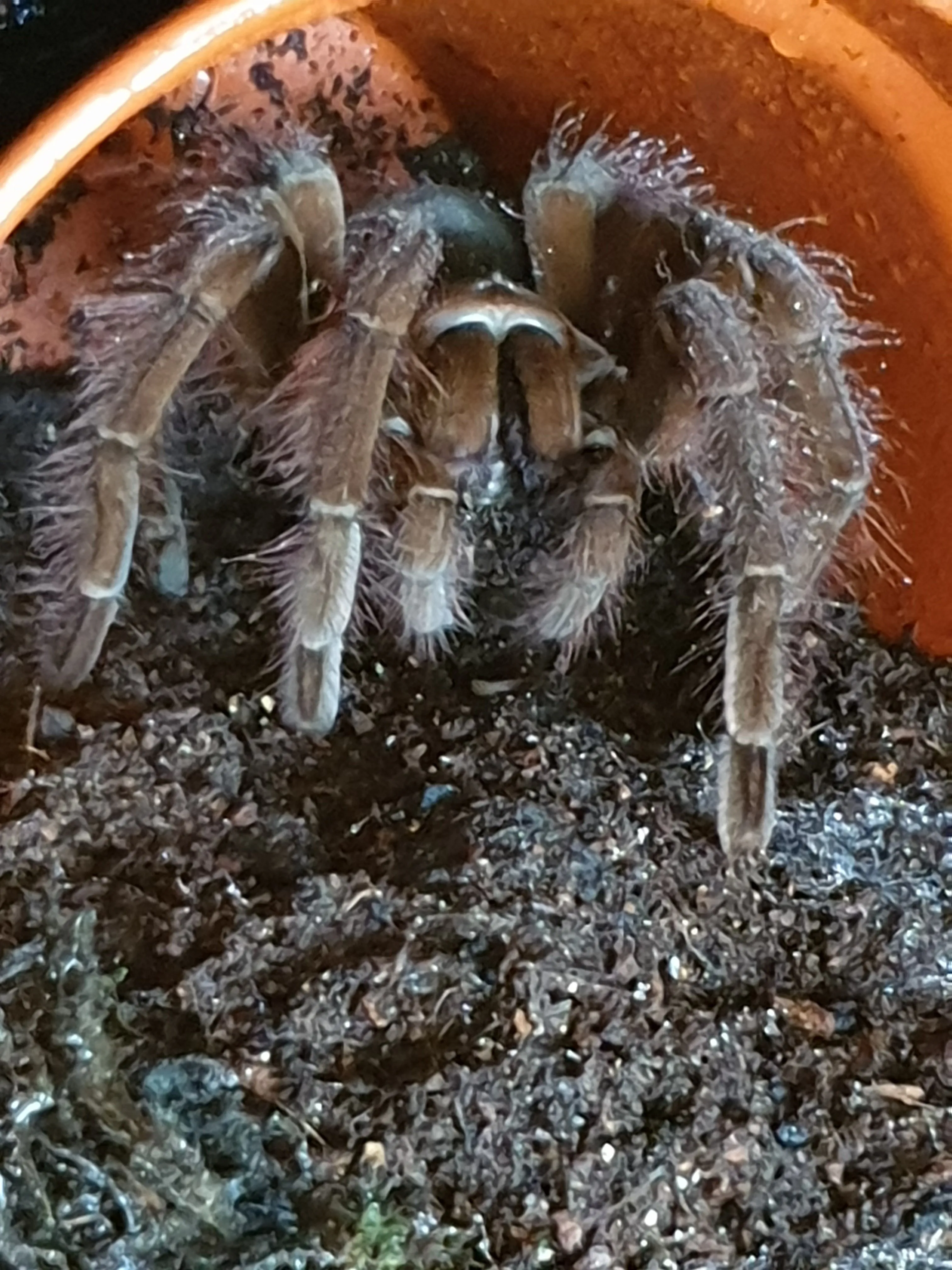
Blondi Tarantulas can live for a significant amount of time, particularly the females. Females can live for 15 to 25 years, while males typically have a shorter lifespan, often only living for 3 to 6 years after reaching maturity. Factors like diet, habitat conditions, and overall health play a significant role in their longevity. The long lifespan of females makes them a long-term commitment for owners, and they are a worthy investment for arachnid lovers.
Fact 5: Feeding Frequency
The feeding frequency of a Blondi Tarantula varies depending on its age and size. Spiderlings and juveniles require more frequent meals, usually every few days, to support their rapid growth. Adults can be fed less frequently, often once or twice a week. Overfeeding can lead to health issues, so it’s important to monitor their appetite and adjust the feeding schedule accordingly. Observing your tarantula’s behavior and body condition will help you determine the optimal feeding schedule for its needs.
Fact 6: Their Venom
The venom of a Blondi Tarantula is generally considered mild and is not life-threatening to humans. Their venom is primarily used to subdue prey, and their bite is often compared to a bee sting. Symptoms can include localized pain, swelling, and muscle cramps, which usually subside within a few hours. While not typically dangerous, it’s still important to avoid being bitten by any tarantula. Proper handling techniques and caution are essential when interacting with these spiders.
Fact 7: Common Behaviors
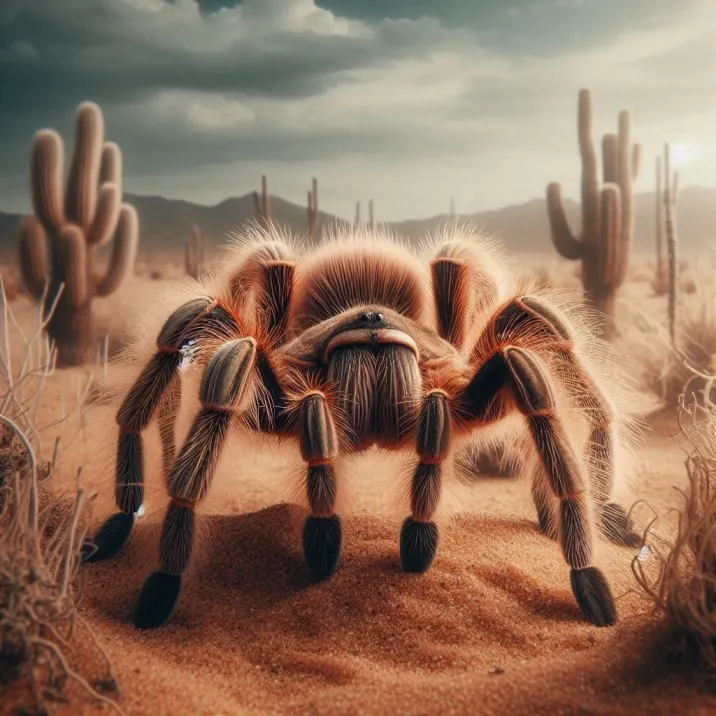
Blondi Tarantulas exhibit a variety of interesting behaviors. They are primarily nocturnal, meaning they are most active during the night. They can be observed digging burrows or utilizing existing structures in their enclosures. They may also be seen flicking urticating hairs when threatened, or displaying a defensive posture. Understanding their behavioral patterns allows keepers to better meet their needs and provide an enriched environment. Watching these behaviors can be very interesting and can help you understand the spider.
Caring for a Blondi Tarantula
Enclosure Setup
Creating a proper enclosure is essential for the well-being of a Blondi Tarantula. A large, well-ventilated terrarium is necessary, with enough space for the spider to move around. The enclosure should have a substrate of several inches of substrate, such as a mixture of peat moss, vermiculite, and coconut fiber, to allow for burrowing. Hiding places, such as cork bark or artificial plants, are important to provide security. The enclosure should also have a shallow water dish for hydration. A well-designed enclosure is vital for their overall health and happiness. Make sure the enclosure is stable and can’t be knocked over.
Humidity and Temperature
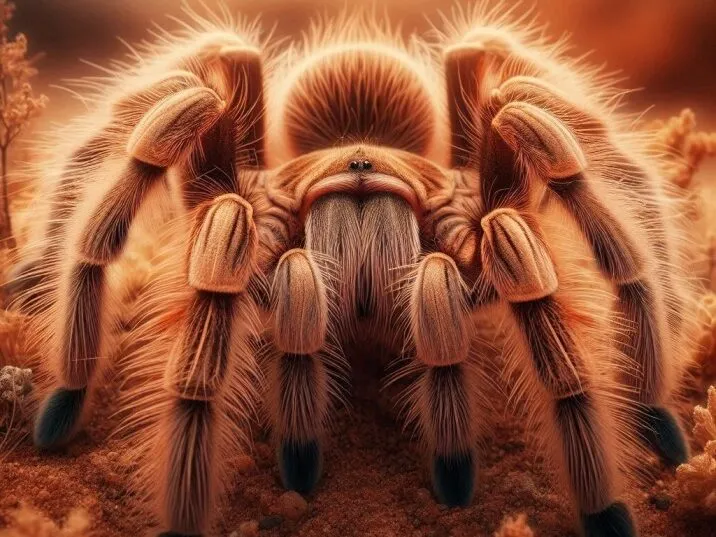
Maintaining the correct humidity and temperature levels is crucial for a Blondi Tarantula. The ideal temperature range is between 75-85°F (24-29°C). Humidity should be kept relatively high, around 75-85%, which can be achieved by misting the enclosure regularly and providing a water dish. A hygrometer is useful for monitoring humidity levels. Proper temperature and humidity are essential for the spider’s molting process and overall health. It’s important to make sure the humidity and temperature are right for the spider to thrive.
Handling and Safety Precautions
Handling Blondi Tarantulas should be done with extreme caution. While they are not aggressive, their size and defensive hairs pose a risk. Handling is best avoided unless necessary, such as for enclosure maintenance. If handling is required, wear gloves and handle them over a soft surface to prevent injury in case of a fall. Always be mindful of the spider’s defensive behavior and avoid any sudden movements. Never try to handle a Blondi Tarantula that is about to molt or has recently molted, as they are very vulnerable during these times. Safety for both the owner and the spider should be the primary focus.
Conclusion
The Blondi Tarantula is a remarkable creature that embodies both the beauty and the complexity of the natural world. From its impressive size and appearance to its unique behaviors and care requirements, the Blondi Tarantula offers a fascinating glimpse into the lives of arachnids. Understanding the facts about their habitat, diet, and defense mechanisms provides valuable insights for those considering them as pets or simply wishing to learn more about these fascinating creatures. By following the guidelines for their care and respecting their natural instincts, enthusiasts can contribute to the well-being of these gentle giants and appreciate the wonders of the animal kingdom. The Blondi Tarantula is an animal that will be sure to intrigue you.
